| ![]() | | |
The Land Rover rattles east over the sandy bottom of Mtanda Plain in central Zambia as we head for a pink horizon promising another cinematic sunrise. "See that dust?" asks Braston Daka, our guide and driver. "It looks like a big herd of buffalo coming to drink."
The burnt orange sun rises majestically at 5:24, silhouetting a few lonely trees. In minutes, we see an endless train of buffalo emerging single file from the morning haze, headed to the hot spring, a green oasis in the dry season's last days. Braston drops us off in the company of our scout, Boston, who totes a .458 caliber rifle with finger-sized bullets. As Braston drives off to a nearby sausage tree to start a fire for breakfast, we walk. Boston shows us leopard tracks among buffalo and elephant prints near the water.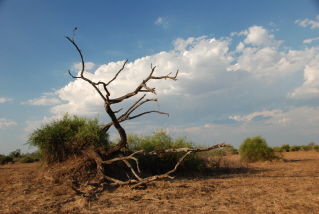
We had risen at 4 after sleeping comfortably in the understated elegance of our accommodations at Nsefu Camp on the banks of the Luangwa River, in South Luangwa National Park. We drove through the unblemished darkness, passing the occasional hippo and a pack of hyenas, leaving behind the brush and open woodland enveloping the river for the plain and its vastness. We've seen no one, just the wild expanse home to dozens of animal species.
Over the past few days, that's what I've come to expect in Zambia, a remote South African country at an appealing cusp. Even though more companies now offer bush experiences here, Zambia's national parks still offer some of the continent's richest, most intimate animal viewing because the country is just now making a name for itself as a prime safari destination. Rather than pile into a minivan with a dozen other tourists, you sit on elevated seats in a Land Rover with only two or three others.
Kent Redding, president of Africa Adventure, a Denver-based outfitter, lived in Tanzania for several years in the 1980s but never visited neighboring Zambia because the country did little to develop tourism after winning independence from Great Britain in 1964. But times have changed. Last year, he trekked here twice after three major international safari operators purchased Zambian camps and upgraded them within the last two years. Longtime operators like Ro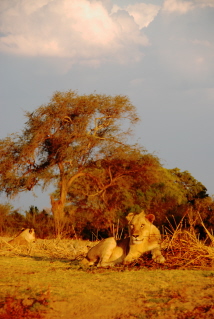 bin Pope recently added luxury safari houses and upgraded their camps with modern amenities, from gourmet meals to fine linen. bin Pope recently added luxury safari houses and upgraded their camps with modern amenities, from gourmet meals to fine linen.
With all these changes, you can now travel a circuit through the country's national parks, moving from one pampering camp to another. For that reason, now's the time to go - before the word gets out and the visitor count starts climbing. "You have so many opportunities to get close to nature. I predict it's going to become much more popular in coming years," says Redding, whom I met on my trip.
On Mtanda Plain by 6:15 a.m., Braston tends to the fire of mopane branches, putting the finishing touches on an English breakfast featuring sausages, bacon, fried tomatoes, scrambled eggs, and fire-toasted bread. We eat, balancing china plates on our laps while sitting in folding chairs arranged around the flames.
In the near distance, the buffalo linger, then begin wandering off, making room for impala and a few straggling zebra. Braston packs up the breakfast dishes and we pile into an open four-wheel-drive vehicle, driving north past impala, iridescent-blue hooded guinea fowl, and a giant baobab tree just coming into leaf in anticipation of the rainy season, due any day.
The brush gets heavier and across a dry wash in the shade lay three lions, a male and two females. We drive within 20 feet. There's something about going eye to eye with a lion that is both exhilarating and unnerving. As we watch, a warthog and her youngster wander into the area, arousing two of the lions. They briefly investigate, then decide not to bother, interested more in napping than feeding.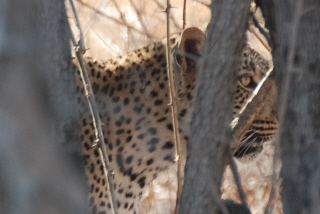
About 8:15, we stop at a green oasis, a grazing spot for impala, warthogs, and a huge flock of crowned cranes. In the distance, zebra and elephants mosey toward us, drawn to the water. In a nearby tree, a tawny eagle sits morning sentry.
By the time we get back to camp, the adventure has stretched to six hours. We've seen only two other vehicles and a stunning display of wildlife. That's Zambia.
Nsefu Camp is the country's oldest bush camp, founded in 1951 by the late guide and conservationist Norman Carr, who moved it to its present location on a sweeping bend of the Luangwa River two years later. Getting here means flying into Lusaka, Zambia's capital, then buckling into a small plane for a 45-minute flight to Mfuwe, followed by a 90-minute drive in a four-wheel-drive vehicle.
When Robin Pope Safaris took over the property in 1998, the company renovated the original six rondavels (round huts) overlooking the river, adding bathrooms and showers to each one, and even verandas. But it's still Africa, so electricity operates only in the mornings and evenings during meals and while socializing at the bar, and there's no air conditioning. Even with the heat, sleep comes easy at bedtime, thanks to the pace of the day's adventures and the night's stillness.
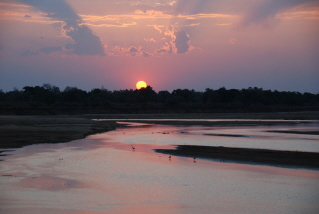
Unless you're taking a special trip like our trek to Mtanda Plain, days at Nsefu Camp begin with a "good morning" greeting at 5:15, just as the diesel generator fires up to provide electricity for a couple of hours. After the camp staff serves breakfast in the open air overlooking the river, you're off for about four hours of wildlife viewing, with a break for tea from the Land Rover's rear at midmorning. Siesta time follows lunch at the camp, then tea at 3:45 preludes the hour-long night drive spotlighting animals that prowl after dark, like leopards, porcupines, mongoose, and the occasional spitting cobra.
Back at the camp, by the light of candles, communal dinners feature hearty fare like Beef Wellington and breaded fish. The guests are more likely European, often couples, and experienced African travelers so the conversation veers from the state of soccer on the continent to favorite close encounters with wildlife in the bush.
On our first night drive, photographer R.J. Hinkle and I are joined by Rick Versteegh, manager of the Stanley Safari Lodge in Livingstone in southern Zambia, who has come north for a season-ending holiday. Rick wants to see spots and gets his wish when Braston takes us into the heavy brush, where we come across a leopard treed by a lioness. Within minutes, we see another carrying a dead baby impala.
Heading out on safari the second morning, we hope to get closer to hippos, and we're soon on the riverbank snapping pictures of a pod below. We make a rare daylight sighting of a female leopard and briefly follow her in the vehicle until she disappears into the thick brush. "We're lucky," Rick says. "Some people go 50 years and never see a leopard."
It's as if Braston can summon animals upon request. On the third morning, we mention that we haven't seen any giraffes, and he leads us to them twice that day, once drinking from a watering hole and once grazing treetops yards from the vehicle.
Zambia may be just beginning to offer the kinds of tourism established elsewhere in Africa, but camps run by Pope and Carr pioneered "walking safaris" decades ago. On our final morning at Nsefu, we walk along the river with Braston and another guide, Sebastian Kamwendo. It's the small things they emphasize - the white calcium of hyena scat (hyenas eat everything, even the bones), how a hippo splashes dung with his tail to mark a path, the Carmine Bee-eater birds nesting in the riverbank, and the impression in the sand where a giraffe spent the night.
This is my first African trip and around every corner on the dusty trail another remarkable experience awaits. We've seen more different animals than I could have imagined and the adventure has days to go. I'm reminded of a quote from British travel writer Brian Jackman: "Everything in Africa bites, but the safari bug is worst of all."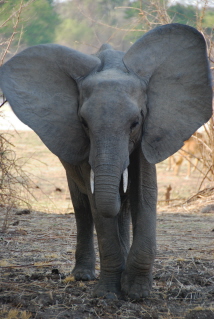
From Nsefu, it's a 90-minute ride back to Mfuwe and then an hour-and-45-minute flight to the Royal Zambezi airstrip. Its rough dirt runway cuts into the bush 15 minutes from the Chongwe River Camp in Zambia's Lower Zambezi National Park, on the southern border with Zimbabwe.
The camp boasts an impressive view at the confluence of the Chongwe and Zambezi rivers, with mountains rising in the near distance to the north. The focus here is the rivers. On the first day, we paddle up the Chongwe until a large family of elephants blocks our path. There's no telling a herd of these big boys to step aside, so we break out the Mosi lagers on the riverbank and watch them frolic - yes, frolic - in the water and on the dusty bank. The next afternoon, we canoe the Zambezi, an adventure punctuated by a fierce rainstorm that soon surrenders to the sun. We give hippos a wide berth, but get close to seemingly unthreatened crocodiles.
Christiaan Liebenberg, who grew up in Zambia, started the camp 14 years ago with just a couple of tents. In the shade of acacia trees, he has gradually transformed it into a luxury destination. A central lounge and dining area are surrounded by eight tent chalets with hot showers under the stars; two new suites feature private lounges, dining areas, and splash pools. The breezes off the water make the nights cool enough for comfortable sleeping.
The setting is singularly African, but the cuisine is decidedly Continental. Chef Kennedy Nyandowo cooks imaginative meals - tilapia with olives and potatoes, beef with red wine sauce - that the staff serves at a large communal table.
You don't forget you're in the wild, though. Baboons, elephants, and the occasional hyena wander through camp. And casting for tigerfish is a favorite activity; Chongwe attracts avid fishermen from oceans away.
During a morning safari, Richmond, our guide, stops repeatedly to check tracks, looking for the park's large pride of lions. We unexpectedly find a small group under the shady bank of a dry riverbed. Two hours later, we spot the larger group of eight and the magnificent elder male, Douglas, at a lagoon's edge. They ignore us as we linger, watching them in the late-morning shade.
We head to the Zambezi River, where the staff is catering a lunch brought by motorboat. On the way, we stop amid a herd of about 15 grazing elephants, with more coming from the riverbank after their morning drink. After counting 30, then 50, we soon realize we're in the midst of about 70 that pay us little attention.
On our final morning in Zambia, I join a small group for a walking safari with Rob Fynn, a guide with 30 years experience who migrated from neighboring Zimbabwe. He leads us from the plain to a channel of the Zambezi, uncovering crocodile eggs, offering looks inside a termite nest, and showing us where the government's anti-poaching team spent nights inside a thicket setting fires nearby to keep away the hyenas. We follow the channel, spotting a group of elephants and move closer to investigate.
It's the same group as the day before. We're downwind so they don't detect us, and, at Rob's suggestion, we try to circle them to reach our ride that will ferry us back to camp. But the elephants are everywhere. We settle down and stay quiet. Rob, who carries a .435 caliber rifle, says he's had to shoot elephants three times and each time it was his fault for being upwind or moving in too close to a young male. He's not going to chance getting too close on foot. He radios the driver to pick us up.
It's a final reminder why I find this remote animal kingdom so appealing: In Zambia, the wild - and the wild life - rule.
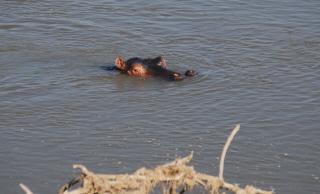
Zambia Essentials
GETTING THERE
Several airlines fly into Zambia through Johannesburg, South Africa, but the easiest journey is through London. British Airways flies into Lusaka, Zambia's capital, three times a week from Heathrow. From there, you take a smaller plane to airports or landing strips near national parks. Your destination contact usually will arrange the flights as well as pickup at the airport.
GETTING AROUND
Flights within the country are short and generally on time, but four-wheel-drive rides to the camps may be 20 minutes, as it is to Chongwe River Camp, or up to 90 minutes, as it is to Nsefu Camp.
Most visitors move from camp to camp, staying a couple of nights in each. All-inclusive per-person rates range widely, from seven nights for less than $3,000 to 10 nights for $7,500 and more. Look for bargains during the late season in October and November and the rainy "Emerald Season" from November to March. Lodging ranges from bush camps with basic tents and bucket showers to architecturally daring houses with spectacular views and every imaginable amenity. Don't confuse the "tents" here with what you stayed in as a Scout. They're often beautifully designed and appointed small huts or chalets.
TRIP PLANNING
For a one-stop outfitter on trips to Zambia, contact Africa Adventure (866-778-1089, adventuresinafrica.com), a company with more than two decades of experience on the continent.
|
|
|
 Jim Morrison
Jim Morrison
 Travel
Travel
 Culture
Culture
 Sports
Sports
 Environment
Environment
 Business
Business
 Bio
Bio
 Photos
Photos
 Links
Links
 Contact
Contact
 Blog
Blog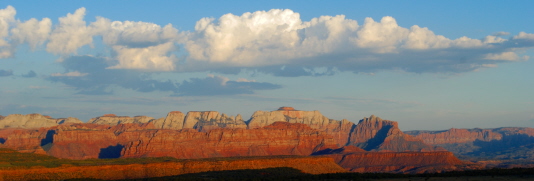
 Travel
Travel Culture
Culture Sports
Sports Environment
Environment Business
Business Bio
Bio Photos
Photos Links
Links Contact
Contact Blog
Blog
 Travel
Travel Culture
Culture Sports
Sports Environment
Environment Business
Business Bio
Bio Photos
Photos Links
Links Contact
Contact Blog
Blog